A poster explaining how to use apostrophes correctly.
Display this educational poster in your classroom to remind your students how to use the apostrophe correctly.
Updated: 03 Aug 2020
A poster explaining how to use apostrophes correctly.
Non-Editable: PDF
Years: 3 - 7
Tag #TeachStarter on Instagram for a chance to be featured!
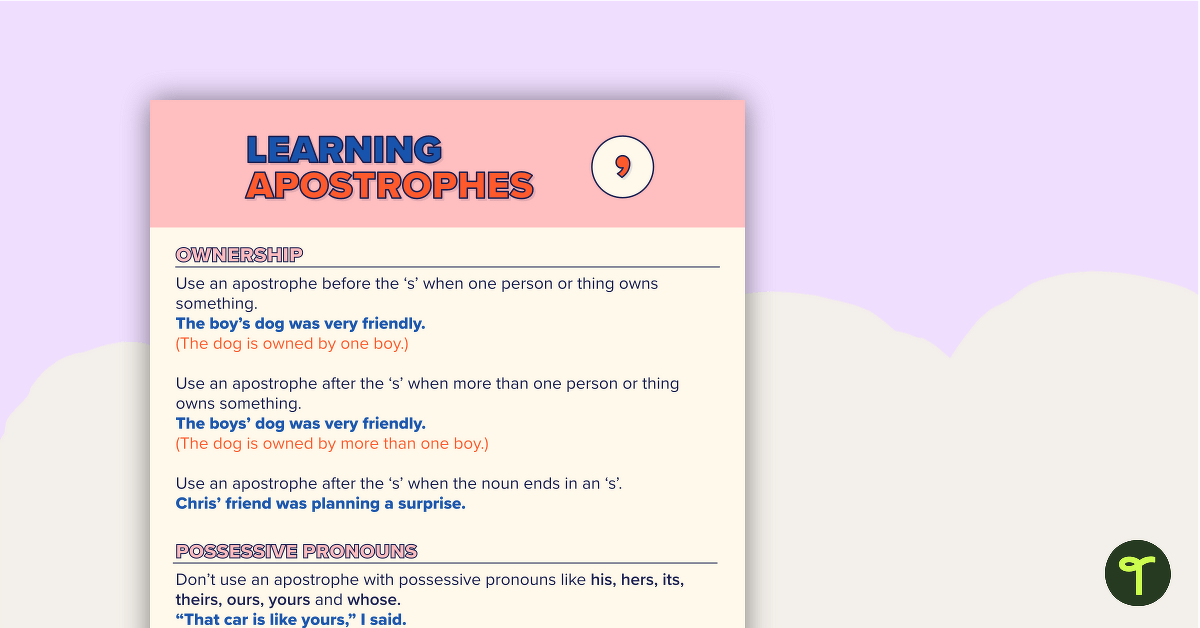
A poster explaining how to use apostrophes correctly.
Display this educational poster in your classroom to remind your students how to use the apostrophe correctly.

We create premium quality, downloadable teaching resources for primary/elementary school teachers that make classrooms buzz!
Write a review to help other teachers and parents like yourself. If you'd like to request a change to this resource, or report an error, select the corresponding tab above.
Update of poster design.
Would you like something changed or customised on this resource? While our team makes every effort to complete change suggestions, we can't guarantee that every change will be completed.
Did you spot an error on this resource? Please let us know and we will fix it shortly.
Are you having trouble downloading or viewing this resource? Please try the following steps:
If you are still having difficulty, please visit the Teach Starter Help Desk or contact us .

Practise identifying possessive nouns with this pumpkin-themed worksheet.
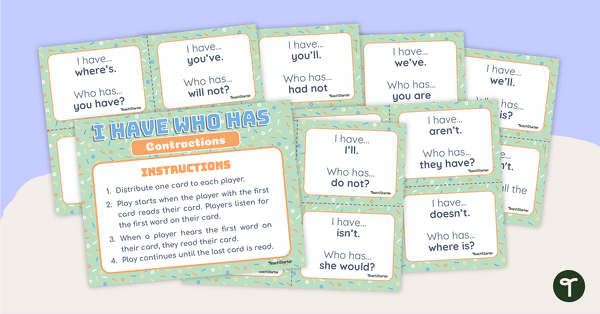
Encourage correct spelling and usage of contractions in your English lessons with an engaging I Have, Who Has? Card game.
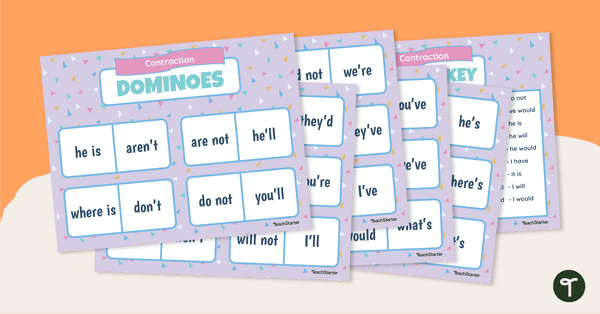
Build vocabulary and spelling skills and have fun with contraction word games.
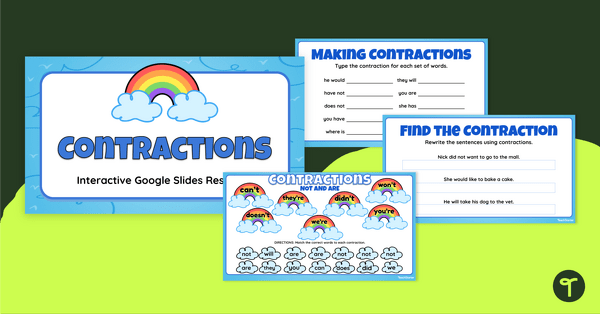
Encourage growth in spelling and writing conventions with a Contractions for Kids Google Interactive.

Practice identifying possessive nouns with this Christmas-themed worksheet.
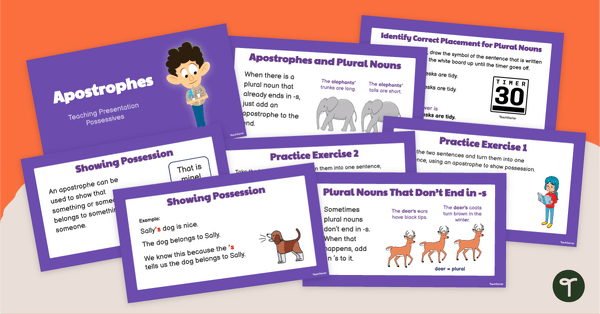
Teach your students to use the correct forms of possessive nouns with an interactive teaching presentation.
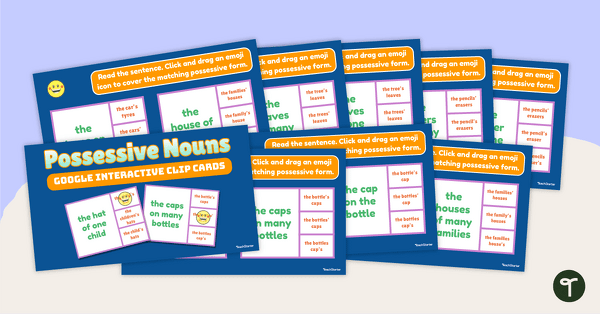
Provide digital possessive noun practice activities for your learners with a Google Slides interactive activity.

Practise using the correct forms of possessive nouns with an exciting game of Four-in-a-Row!

Engage your learners with a Google Interactive activity designed to build skill with possessive nouns.
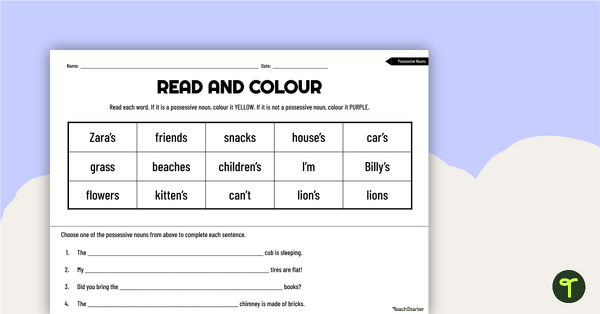
Practise identifying possessive nouns with this worksheet.
Hi Amy, Thank you for your question. We haven't included an answer sheet for the worksheets in this instance. If you would like us to add one, can you please submit a change request to this resource using the Changes & Updates tab above? This tab can be found near the comments section. This will help us keep all of our suggestions and requests together. Thanks again!
Is there an answer sheet?